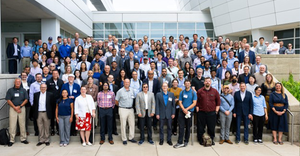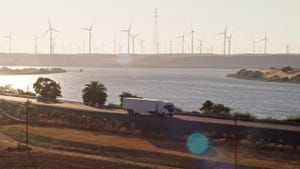Wait Until Nexus Year!
May 1, 2007
Landfill owners and other waste facility operators whose activities include digging or filling in land in or near wetlands are getting no new help from the U.S. Supreme Court in clarifying what the U.S. Army Corps of Engineers (COE) can require them to do.
The United States filed suit against Joseph and Alice Morrison, who own property on Harsens Island, Mich., alleging they had violated Section 404 of the Clean Water Act “by digging, repairing and then re-burying a broken water line” in a wetland adjacent to a canal that empties into the St. Clair River.
The U.S. Court of Appeals for the Sixth Circuit upheld a $25,000 fine against the Morrisons. [United States v. Morrison, No. 05- 1552, April 26, 2006.] The appeals court relied on Solid Waste Agency of Northern Cook County v. U.S. Army Corps of Engineers, 531 U.S. 159 (2001) which, reiterating a 1985 Supreme Court ruling, held that COE jurisdiction depended on a “significant nexus” — for example, when a wetland is adjacent to waters of the United States.
A mere two weeks after the Sixth Circuit handed down its ruling, the Supreme Court issued its opinion in Rapanos v. United States, 126 S.Ct. 2208. The decision was notable for a three-way split among the justices: four votes for a loose standard giving COE jurisdiction; four votes for a strict standard; and one vote (Justice Anthony Kennedy) that was ostensibly strict, but left lots of room for COE regulation.
Kennedy's concurring opinion reaffirmed the concept of a “significant nexus,” but rejected the notion that a “mere hydrological connection” would be enough to give the COE jurisdiction. [See “Parsing the Waters,” Waste Age, Sept. 2006, p. 14]
The Morrisons promptly asked the appeals court to reconsider its ruling, arguing that the Rapanos decision changed the meaning of “significant nexus” in a way that removed COE jurisdiction over their property. However, the Sixth Circuit refused to rehear the case. Then, two months ago, the Supreme Court, made aware that the Sixth Circuit failed to “even acknowledge the precedent,” declined to review the appeals court's decision. [Morrison v. United States, No. 06-749, March 5, 2007]
The Morrison case is unusual in that the property owners conceded that the wetlands were adjacent to the river, but denied they were part of the United States. Nearly two centuries ago, the land was part of territory disputed by the United States and what was then British Canada.
But, in 1828, following agreement on a border, the federal government issued patents to Jacob Harsens for a part of the island, but retained the title to the wetlands. The appeals court had no trouble concluding that the island has been part of the state of Michigan since 1837 when Michigan joined the union.
In February, the high court let stand a decision by the U.S. Court of Appeals for the Ninth Circuit. [Docket No. 06-619.] Overturning a lower court decision, the Ninth Circuit opinion said that the COE could regulate wetlands on a site even without demonstrating a “significant hydrological and ecological connection” between the wetlands and contiguous waterways. Two navigable flood control channels run parallel to the site and connect with San Francisco Bay. The wetlands are separated from the channels by man-made berms.
The columnist is a Rockville, Md., attorney and serves as general counsel of the Solid Waste Association of North America.
The legal editor welcomes comments from readers. Contact Barry Shanoff via e-mail: [email protected].
About the Author
You May Also Like




